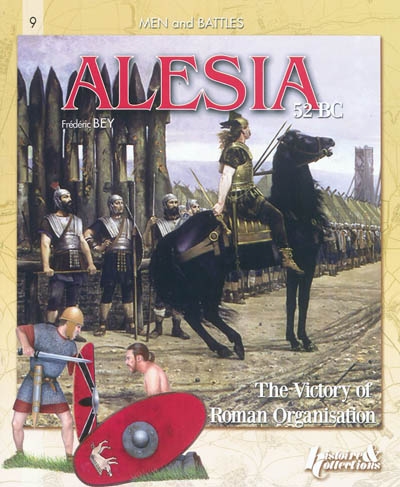en savoir plus

Permet à tous ses détenteurs d'obtenir 5% de réduction sur tous les livres lors du retrait en magasin (réduction non cumulable avec les réductions de type étudiant).
Offre également un certain nombre d'avantages auprès de nos partenaires.
Avec les favoris, retrouvez dans un espace les sélections effectuées au fur et à mesure de vos navigations dans le site.
Constituez pour votre usage personnel vos listes de livres en prévisions d'achats futurs et votre sélection d'articles, dossiers, événements, vidéos ou podcasts préférés ou à découvrir plus tard...
Il suffit simplement de cliquer sur "Ajout Favori" sur chaque page qui vous intéresse pour les retrouver ensuite dans votre espace personnel.
Requiert un compte Mollat
Requiert un compte Mollat
Alésia, 52 BC : the victory of Roman organization
Auteur : Frédéric Bey
en savoir plus
Résumé
Le déroulement et les origines de l'affrontement décisif des forces romaines et gauloises lors de la bataille d'Alésia. ©Electre 2025
Quatrième de couverture
Alesia, 52 BC
The victory of roman organisation
The romans had been at odds with the « Gauls » for a very long time indeed. The Celts first invaded Italy across the Alps as far back as about -400 BC, with the Cenomani, the Lingonii, the Boii and the Senonii settling down once and for all in Northem Italy. Somewhere between 390 and 386 BC, a Senoni warchief called Brennus managed to capture Rome and ransom the city with his famous Vae Victis. The Urbs was then a city whose authority was only relative. Nonetheless, the sack of Latium's capital, highlighted by Livy in his History of Rome, helped to forge a centuries-old loathing between the Romans, ashamed of being forced to capitulate to Brennus, and the Gauls, insolently proud of their triumph.
The next step was part of the competition between the « Great Powers » of the period. Independent Gaul was implicated in the global expansionist process of Roman might, which-took place throughout the whole of the Mediterranean basin. Finally more pragmatically, Gaul merely became a political pawn in the hands of the triumvirs Pompey, Crassus and Caesar after they took over control of the Republic at the end of its decline, from the 60s BC onwards.
It was therefore as a victim of what was at stake quite outside its control that Gaul so dramatically became part of Julius Caesar's political strategy.
Alésia was the final manifestation of this deep mistrust between the two peoples.
Fiche Technique
Paru le : 01/07/2011
Thématique : Gaule - Celtes
Auteur(s) : Auteur : Frédéric Bey
Éditeur(s) :
Histoire et collections
Collection(s) : Men and battles
Contributeur(s) : Cartographe : Pascal Da Silva - Cartographe : Antoine Poggioli - Traducteur : Alan McKay
Série(s) : Non précisé.
ISBN : 978-2-35250-123-7
EAN13 : 9782352501237
Reliure : Broché
Pages : 66
Hauteur: 24.0 cm / Largeur 20.0 cm
Épaisseur: 0.7 cm
Poids: 290 g

